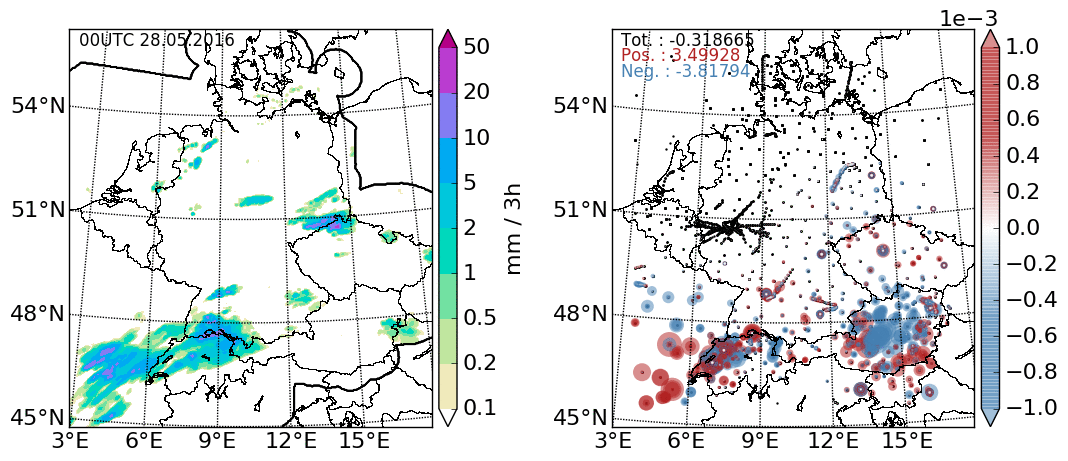Observation impact in a convective-scale ensemble data assimilation system
18.01.2018

Accurate initial conditions are a crucial prerequisite for accurate forecasts by numerical weather prediction (NWP) models. These initial conditions are created by data assimilation (DA) methods that combine a short-term forecast with a wide range of observations of the atmospheric state. Considering the steadily increasing amount and variety of observations used in current DA systems, it is essential to understand and monitor the role of different observation types.
In the Hans-Ertel-Centre for Weather Research the observation impact in the operational convective-scale ensemble system of Deutscher Wetterdienst (KENDA/COSMO-DE) is investigated. An ensemble forecast sensitivity to observation impact (EFSOI) method is used to evaluate the contribution of various conventional observations to the reduction in forecast error. Conventional observations are direct observations of model variables such as temperature, wind, pressure and humidity, which are observed by aircrafts, wind profilers, surface stations, ships, boys and radiosondes.
This study it the first applying independent radar derived precipitation observations for verification. The movie shows the 3-h accumulated precipitation rates (left) as well as the resulting observation impact (right). A negative impact (blue circles) stands for a beneficial observation/ reduction of forecast error, whereas a positive impact (red circles) goes along with a degradation of the forecast quality. The three-day high-impact weather period was characterized by several flash floods and heavy rainfalls.
Necker, T., Weissmann, M. and Sommer, M. 2018: The importance of appropriate verification metrics for the assessment of observation impact. Q.J.R. Meteorol. Soc., submitted.

